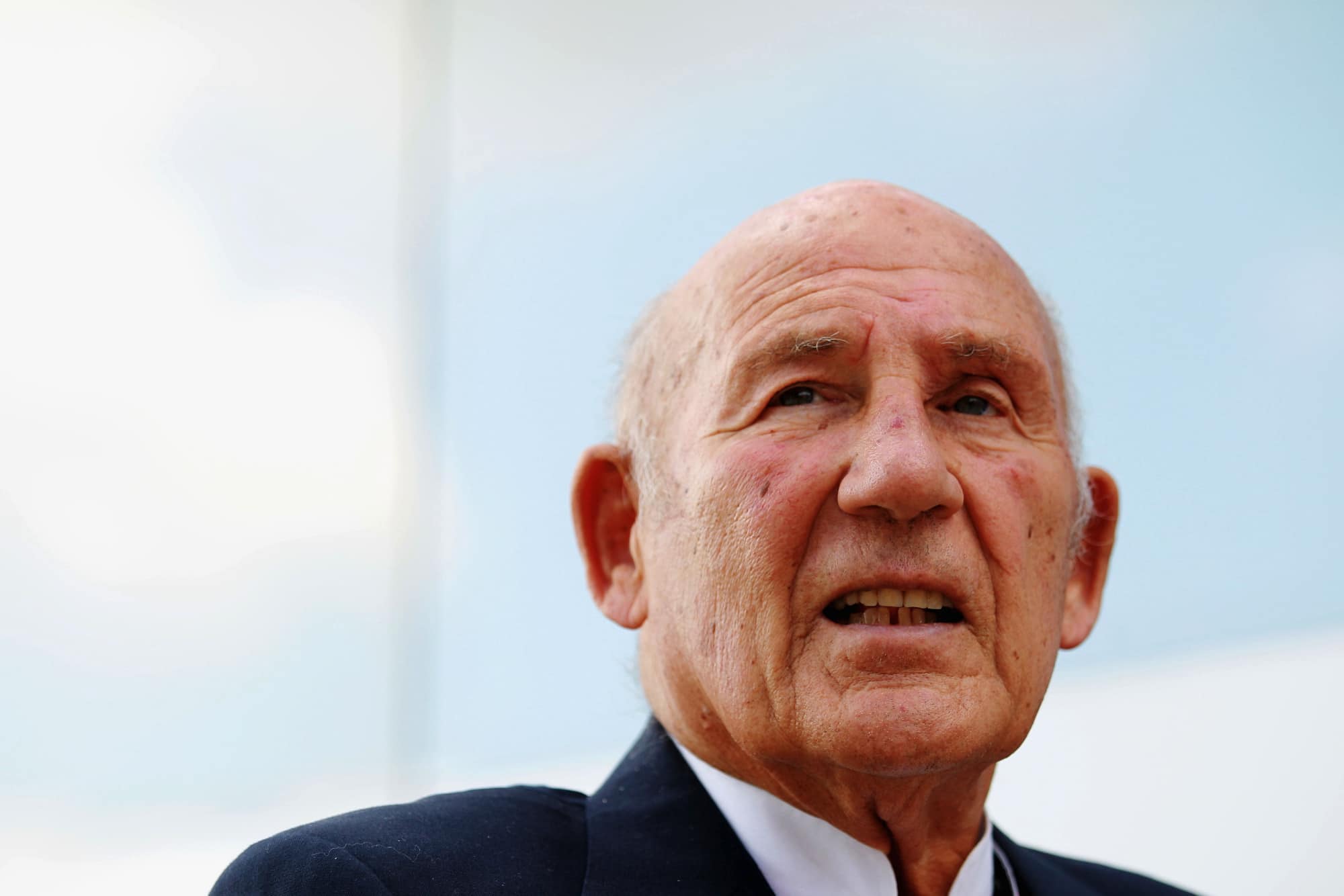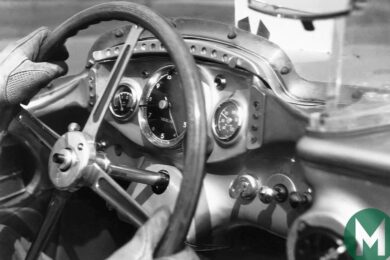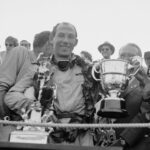Ultimately, they considered him still a little too inexperienced for such a responsibility but urged that should he get F1 experience for future consideration there. A privately purchased 250F Maserati in ’54 established him firmly among the elite, only unreliability keeping him from victory at Monza – where he was leading Fangio’s Mercedes and Ascari’s Ferrari. A ’55 place at Mercedes duly came his way, the basis for not only his first Grand Prix victory – at Aintree – but also his legendary triumph in the Millie Miglia sports car race (with pace notes supplied by Motor Sport’s partnering Denis Jenkinson), a performance since described as ‘the most epic drive ever’.
Moss remained uncertain about whether he really had defeated Fangio at Aintree ‘55 or whether it had been a gift, despite the Argentinean champion’s assurances to the contrary and that Moss had beaten him fair and square. But generally Moss was the pupil, Fangio the master (in F1, at least), the pair separated by 20 years and different languages, though united by total mutual respect. In a sports car, there was little question Moss was the faster of the pair and his career would include major sports car victories in Jaguar and Aston Martin machinery, not to mention innumerable successes in GT and touring cars, even rallying.

Moss during the 1955 Monaco Grand Prix with Mercedes
Getty
After Mercedes’ withdrawal from the sport at the end of ’55, Moss reunited with Maserati, this time as a works driver. Patriotism figured heavily in his transference to Vanwall where he would win extensively in ’57 (including a sublime victory at Pescara, where he beat Fangio’s Maserati by three minutes) and ’58, contributing in the latter year towards the team’s victory in the inaugural world constructors championship even though the driver’s world title remained tantalisingly out of reach. The closest he came was in ’58 when, with four victories, he lost out by a single point to Mike Hawthorn, who’d won just once. A measure of Moss’s sportsmanship, though, came when he appeared as a supporting witness for Hawthorn’s appeal against disqualification at Oporto. Had it stood, Moss would have taken the title. Thanks in part to Moss’s testimony it didn’t stand and Hawthorn became Britain’s first world champion.
Moss later claimed that losing the ‘58 title cured him of worrying too much about whether he was world champion or not. Winning races, preferably as the underdog, carried much more meaning for him. As such, driving for Rob Walker’s privateer team, going up against the works Coopers, Lotuses and Ferraris 1959-61, gave him great satisfaction and probably saw him at his absolute peak. Missing three races through injury probably cost him the title to Jack Brabham in 1960. His victories over the vastly more powerful Ferraris at Monaco and the Nürburgring in ’61 were among the greatest displays of virtuosity the sport has ever seen. I asked him once if the Moss of ‘55 that had partnered Fangio was performing at the level he was at in ’61 and he replied: “No, I don’t think so. I think I did improve as I got more experience.” Might the Moss of ’61 have given Fangio a harder time at Mercedes? It’s one of the sport’s great imponderables, just like the epic battles that were surely to come with Jim Clark, whom he had already identified as his future challenger.

Moss in the Formula 1 paddock before the 2011 British Grand Prix
Getty
Moss thankfully did make a recovery from his Goodwood injuries and while the indefinable neurological magic may have been lost during that sleep – upon trying a car a year or so later, he claimed that much of his previous unconscious actions now had to be deliberate – the world and he got to enjoy each other for almost another six decades. He defined his era of racing as much as it defined him and that time was a very special and formative one. Moss is a name that is woven indelibly into the sport’s very fabric. We will not see his like again.
Motor Sport extends its condolences to the family, friends and fans of Stirling Moss
Sir Stirling Moss
Full career biography and statistics in the Motor Sport Database



